Report: Michinoku Folk performing Arts Festival~Kagura
Michinoku Folk Performing Arts Festival. Kagura is the centerpiece of the festival, along with the Ogre Sword Dance and the Deer Dance. Here in the Tohoku region, there are many unique kagura performances. One of the pleasures of this festival is to be able to see some of them all at once.
“Hayachine kagura”
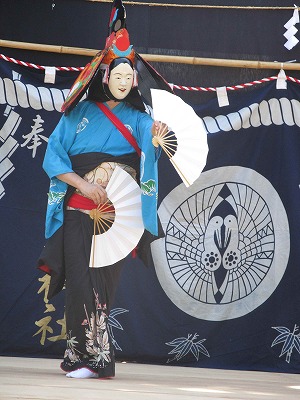
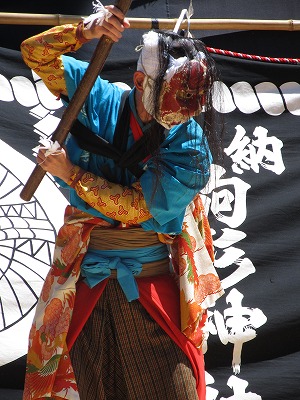

The first thing that comes to mind when talking about Iwate’s Kagura is the “Hayachine Kagura”, which is dedicated to the Hayachine Shrine located between the cities of Hanamaki and Tono, next to Kitakami City. This Kagura, which is said that ”Yamabushi” (mountain priests) have been spread by ”Yamabushi” (mountain priests) in the past, is now registered as an intangible cultural heritage by UNESCO. The surrounding area is dotted with a number of kagura performances that follow in its footsteps (Its number is more than 100). It is so popular that many people come at one time mostly using tourist buses to the annual festival at the original Hayachimine Shrine. Its greatest feature is the good tempo of the dance. The dancer dances at a good tempo by the sound of drums and “tebiragane” (Palm-sized cymbals), which is beaten without a break, bending slightly forward and slumping at the waist. And sometimes the sound of feet stamping on the floor works as a perfect accent. The costumes are also distinctive, the most noticeable being called “torikabuto” like the “Eboshi”(an old hat, long and narrow and high) with a bird on top of it. And underneath, feather-like things hang from both sides, flapping up and down in response to the dance. It is also common to leave the jacket hanging below the waist.
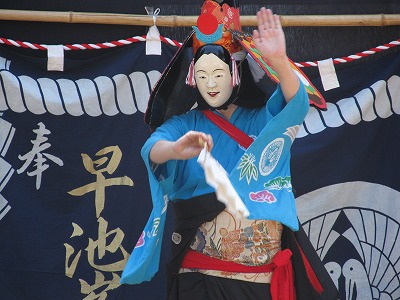
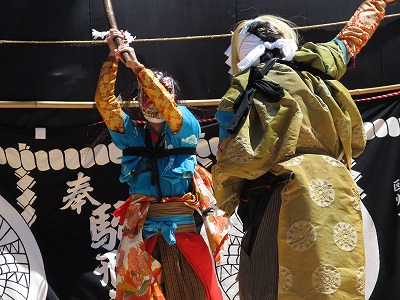
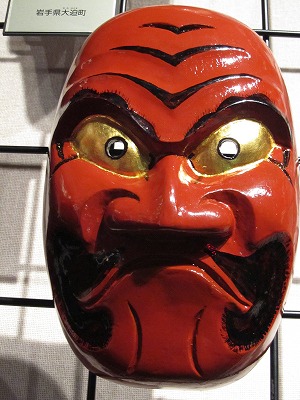
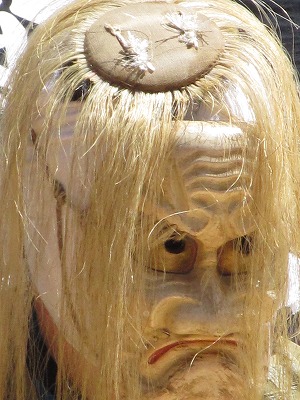

“Daijo kagura”
Since there are many forms of Kagura in Iwate Prefecture, it is up to luck what kind of Kagura can be seen at any given time, but there are also many forms of Kagura that are a fusion of Buddhism and Shinto. Due to Japan’s polytheistic beliefs, the country is tolerant of foreign cultures in terms of religion. Where there was originally Shinto, Buddhism was introduced. At that time, the Japanese handled it like this. The theory was that the Japanese gods were the manifestation of the Buddhist gods in different forms. These are called “Daijo Kagura” or “Hoin Kagura” and are characterized by their strong influence on Buddhism compared to other types of Kagura.
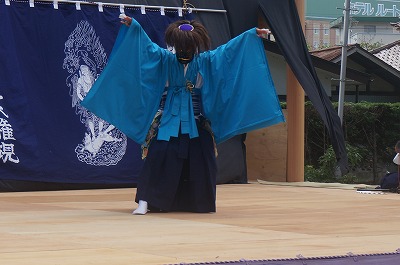
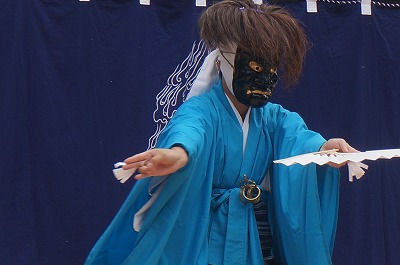
However, the degree of this varies greatly from one kagura to another and from one performance to another. First of all, I would like you to see a performance called “Maou”. This is performed by Kamiyado Kagura, not a demon, but a Buddha who has the power to exterminate demons in Buddhism.
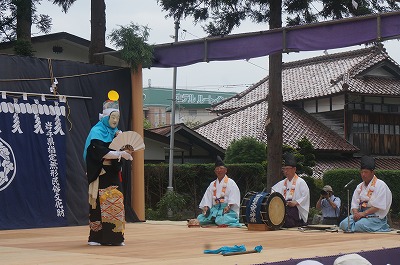
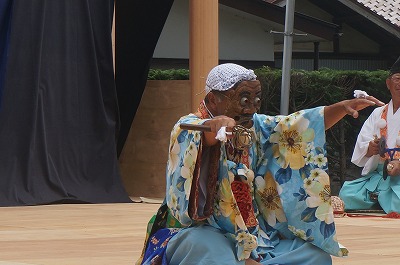

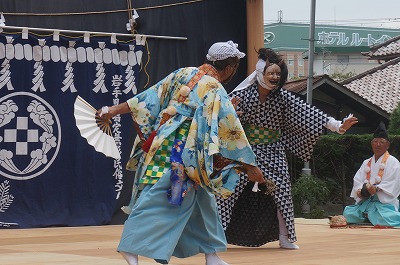
The next play, “Kanemaki” is based on the story of a woman who desperately wants to visit a Kanemaki temple where women are not allowed to worship. However, according to tradition, if she breaks the rule something terrible will happen. Will it happen?
A visiting, slightly unreliable-looking monk is suddenly attacked by a monster. This was a woman’s altered form. The monk managed to dispatch the monster with his magical powers.

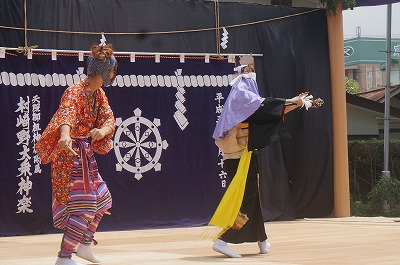
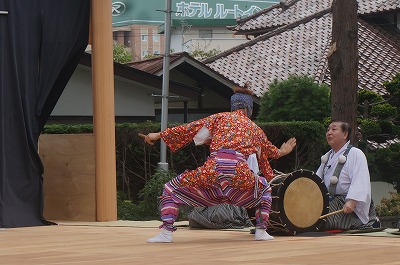

The next show is called “Teito”. First, an attractive young woman appears. Then a strange man with a comedic mask appears. He has been chasing after the woman. From there, a funny exchange with the drummer begins. The man dances, but at first his rhythm is too fast and he dances riotously. The man asks him to slow down, but this time the rhythm is more leisurely. The man eventually collapses and falls asleep.
By this point, it has almost nothing to do with Buddhism. Some of these performances are for entertainment.
“Makisawa kagura” (one of “Nambu kagura”)
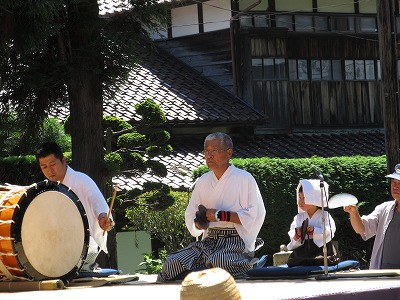

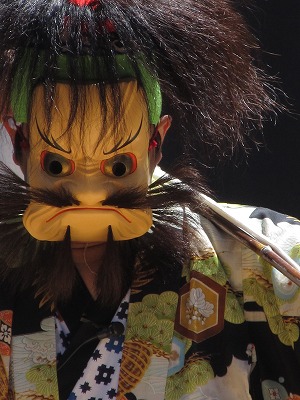
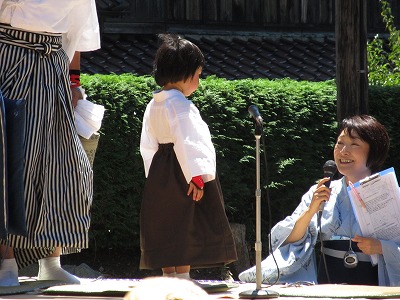
Finally, I would like to introduce “Makisawa Kagura” of Nambu Kagura. Nambu Kagura is structured like an opera, with drummers singing a song and advancing the story. When the characters appear on stage, they themselves sing and talk as if they were singing. Then the song continues, and so on.
And if you look closely, you will see an old man next to him striking hand cymbals, and next to him is another young child striking hand cymbals single-mindedly. Worried about the heat, he was just beating the gong incessantly, with a towel on his head. I asked him about it, and he said he was three years old. There are probably three generations of parents and children standing in a row. When he grows up, he will follow in the footsteps of his grandfather and father.
This is not a rare sight in Tohoku. There is no doubt that the economic development of the large city of Kanto is advancing, and its convenience is unrivaled. But here in the Tohoku region, I feel that something that has been forgotten in the big city is definitely alive and well preserved. I am very jealous of the Tohoku region.